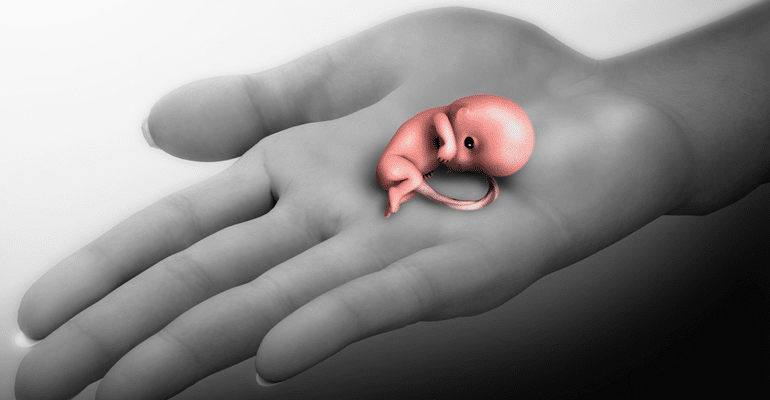For many women, pregnancy can inspire many emotions – everything from joy and elation to nervousness and anxiety. The first trimester of pregnancy, in particular, can tend to be a time of anxiety due to the risks of miscarriage. According to the American College of Obstetrics and Gynecology, about 10 percent of known pregnancies end in loss prior to the 13-week mark of pregnancy. While this statistic is daunting, there are things that can be done during the first trimester to identify abnormalities early and educate parents about what they mean.

Why Miscarriages Happen
There are many lifestyle changes recommended during early pregnancy including taking daily prenatal vitamins with folic acid, embracing a healthy diet, avoiding caffeine and alcohol, and discontinuing habits like smoking or use of drugs.
However, miscarriage can occur regardless of these actions. Risk factors for miscarriage include:
- Advanced maternal age (the risk of miscarriage increases after the age of 40)
- Structural issues with reproductive organs
- Chronic medical issues (such as diabetes or thyroid problems)
- Acute medical issues (such as an infection)
- And the most common cause, embryonic chromosomal abnormality (such as a trisomy disorder)
Understanding Chromosomal Abnormalities
Chromosomes are DNA molecules that contain genetic material. In humans, egg cells and sperm cells, each contain 23 chromosomes. When an egg and sperm meet at fertilization, these chromosomes combine so that the zygote gets 23 pairs of chromosomes – one of each chromosome from each parent – for a total of 46. Sometimes there is a problem during the cell division process, and an extra copy of one of the chromosomes will end up in an egg or sperm cell. At fertilization, the zygote will then end up with three of one of the chromosomes instead of two. This is known as trisomy. Trisomy 13 and trisomy 18 severely impair development and often lead to a miscarriage or stillbirth.
Prenatal Testing Options
Prenatal testing has been used to detect chromosomal issues for many decades. Amniocentesis, first used in the 1950s, required a sample of amniotic fluid for testing. Chorionic villus sampling (CVS), which emerged in the 1980s, requires a sample of placental tissue.
Major advances in medical technologies have impacted maternal-fetal medicine. For today’s expectant mothers worried about chromosomal disorders, a simple, non-invasive prenatal blood test has emerged.
Non-Invasive Prenatal Testing
Non-invasive prenatal testing uses a small sample of maternal blood to detect abnormalities for chromosomes 21, 18 and 13. It can also detect fetal gender. A patient’s provider can order the test as early as ten weeks into her pregnancy. The physician receives results within about a week and then discusses them with the patient.
Women who receive a positive result may be instructed to undergo further testing, along with genetic counseling to educate the parents on the disorder that was identified, the prognosis, and potential next steps.
There are many things to consider when you are pregnant. If you are concerned about miscarriage, talk with your physician about the possibility of prenatal testing.

